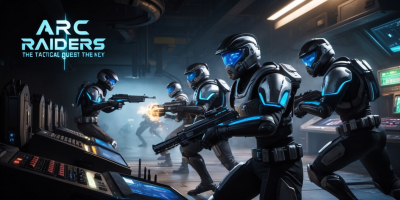Heroes in a Roguelite Shell: An In-Depth Look at Teenage Mutant Ninja Turtles: Splintered Fate
- Sep 06, 2024

Teenage Mutant Ninja Turtles has been a fixture in pop culture since its inception in the '80s, morphing from a quirky comic book into a robust franchise that includes cartoons, movies, toys, and video games. The latest addition to this venerable lineup is Teenage Mutant Ninja Turtles: Splintered Fate, a game that pays homage to its thematic origins but also boldly embraces new influences in the world of roguelite action games. Unlike previous TMNT games, this iteration draws heavily from the successful mechanics of Hades, injecting its unique TMNT essence into a familiar framework.
Origins and Inspirations
The foundation of Teenage Mutant Ninja Turtles: Splintered Fate is built on the elements that made Hades a beloved game. Much like Hades, the narrative revolves around a series of runs where defeat sends characters back to a starting point with incremental upgrades. Master Splinter has been captured, and the four turtles must battle through multiple stages to rescue him. This mechanic not only gives a sense of urgency and challenge but also ensures replayability, a hallmark of any solid roguelite game.
Gameplay Dynamics
Combat Mechanics
The core gameplay involves navigating from one combat room to another, battling enemies, and collecting power-ups along the way. The action is fluid and fast-paced, inviting players to deliver attacks while skillfully dodging enemy strikes. The climax of each run generally involves intense combat scenarios that test both strategy and reflexes. Each turtle boasts a unique set of moves, enhancing the overall diversity of combat experiences. Michelangelo's taunt, for example, can stun multiple enemies, creating opportunities to deal maximum damage.
Strategic Elements
Splintered Fate doesn't merely rely on raw combat skills; it also introduces layers of strategic depth. Players can choose between immediate power-ups or save for long-term benefits that enhance future runs. Decisions such as opting for attack boosts or collecting Dragon and Dreamer Coins add an element of tactical planning. The choices made during these moments can significantly impact the outcome of a run, making each decision feel weighty and consequential.
Challenges and Difficulty Levels
Splintered Fate is far from a simple, child-friendly game. The difficulty level is set to engage seasoned players, making it an invigorating experience even for those who are not new to action games. The roguelite nature of the game means that players should expect numerous attempts before achieving a successful run-through. However, for those who prefer a more relaxed gameplay experience, the game offers an easy mode, ensuring that it is accessible to a broader audience.
Random Perks and Challenges
Each level contains closed arenas filled with a variety of enemies, ranging from evil ninjas and giant rats to laser-spewing robots. After each encounter, players are rewarded with random perks, such as attack boosts or defensive enhancements. The strategic decision of either opting for immediate boosts or long-term advantages adds complexity to the gameplay. The thrill of making the right choice amplifies the excitement and satisfaction after each successful run.
Multiplayer Experience
Co-Op Play
One of the standout features of Splintered Fate is its multiplayer capability. Whether playing online or on the same couch, the game retains the same basic structure as its single-player mode but introduces new layers of chaos and fun. Up to four turtles can join in the campaign, making for an exhilarating and action-packed experience. However, the transition between action sequences and menu navigation can be somewhat jarring, particularly as each player selects their perks in turn.
Technical Limitations
While the multiplayer setup offers a lot of fun, it also exposes some technical limitations, particularly concerning the Nintendo Switch hardware. Frame rate drops are more noticeable when playing with multiple characters, which can disrupt the fluidity of combat. A cinematic mode is available to stabilize the frame rate but can feel like a band-aid solution rather than a true fix.
Character Distinction
Unlike many games that offer minimal distinction between characters, Splintered Fate excels in making each turtle feel unique. Leonardo, Michelangelo, Donatello, and Raphael each bring their traits to the game, reflected in their weaponry, attack patterns, and special moves. This variety ensures that repeated runs remain engaging, as players can switch between turtles to explore different playstyles. Raphael's rapid-fire sai attacks, for example, offer a different experience compared to Donatello's long-range bo staff and temporary shielding.
Endgame and Replayability
Post-Completion Challenges
After completing the main campaign, the game introduces new challenges that encourage players to replay with added difficulty modifiers. These can include tougher bosses, new exits, and increased rewards, all of which keep the gameplay fresh and challenging. This endless variety ensures the game’s longevity, making it engaging even after multiple playthroughs.
Conclusion
While Teenage Mutant Ninja Turtles: Splintered Fate can be easily labeled a Hades clone with a TMNT theme, it goes beyond mere imitation to offer a rich and enjoyable gaming experience. Despite some technical shortcomings and the originally mobile-oriented design, the game provides a fun, dynamic, and engaging roguelite adventure. The unique personalities of the turtles shine through, keeping the gameplay fresh and varied. In summary, Splintered Fate may not reach the narrative heights of its inspiration, but it successfully captures the fun and excitement of battling as one of everyone’s favorite heroes in a half-shell.
Latest Articles
-
![Haven’s Hollow Unveiled: A Journey Through Warzone’s Enigmatic Easter Eggs]()
- Dec 22, 2025
-
![A New Canvas: Charting Change in Creative Gaming Leadership]()
- Dec 22, 2025
-
![Gaming's Booming Financial Frontier: A Closer Look at Record-Breaking Growth]()
- Dec 22, 2025
-
![Navigating Danger: The Tactical Quest for the Key in Arc Raiders]()
- Dec 08, 2025











